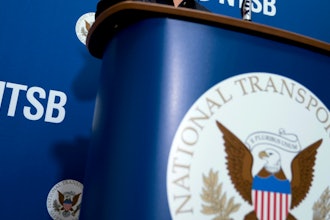Earlier this week, U.S. lawmakers alleged that internal emails reveal that Takata skipped safety inspections for financial reasons, which put profits over consumer protection.
Takata’s lack of oversight resulted in the largest auto recall in U.S. history. The number of vehicles involved in the recall continues to grow, with GM adding another 243,000 cars to the tally last week.
Takata certainly shares a portion of the blame for this massive recall, but U.S. senators are also becoming increasingly frustrated with the federal auto safety regulators at the National Highway Traffic Safety Administration who might have compounded the issue with their lackluster response.
Associated Press writers Marcy Gordon and Dee-Ann Durbin wrote, “NHTSA first learned of a possible problem with Takata air bags in 2004 and investigated the issue in 2009, but didn’t accelerate the recall process until last year.” When problems sit for years before being seriously addressed, it means more consumers unknowingly get behind the wheel of potentially faulty vehicles.
A government audit of the NHTSA released Monday uncovered a failure to properly train employees, review and respond to consumer complaints, hold automakers accountable for safety issues and collect vehicle safety data.
The root of these shortcomings, according to NHTSA Administrator Mark Rosekind, is that the agency is underfunded and understaffed.
Adjusted for inflation, the NHTSA budget is 23 percent lower than it was a decade ago. Senator Richard Blumenthal pointed out that the NHTSA has only 90 employees compared to the Federal Aviation Administration’s 6,000 employees.
The personnel shortage means that only one employee is reviewing consumer complaints for about four hours per day, which leaves little hope that the agency can manage the 80,000 consumer complaints they receive each year.
David A. Wood of CarComplaints.com reported, “The [government audit] says NHTSA has ignored about 90 percent of the 330 complaints submitted daily from concerned consumers across the U.S.” When a large portion of the complaints go unread, it makes it nearly impossible for the agency to identify trends that might point to a dangerous problem.
The lack of funding and shortage of personnel isn’t enough of an excuse for some. “This audit report is one of the worst I’ve ever seen,” Autoblog’s Pete Bigelow quoted Senator Claire McCaskill. “It’s not about resources, it’s about blatant, incompetent mismanagement.”
Whether consumers point the finger at the NHTSA for poor management or the Senators for resisting a budget increase for the agency, it’s clear that the failings of the federal government only extended the recall process. And for an agency designed to protect consumers from unsafe auto parts, waiting several years to get serious about fixing a deadly problem is pretty inexcusable.
Is the NHTSA partly to blame for the extent of the Takata recall? Comment below or tweet @MNetBridget.






















